If you’re reading this article it probably means you have questions about pressure washers for home use. Do I need a pressure washer? What kind of pressure washer do I need? How do I use a pressure washer? In this pressure washer guide, we’ll do our best to answer all those questions for you.
When you think of pressure washers most folks think of them as just another cleaning tool. They are a great cleaning tool, but it’s amazing what all they can be used on. They can be used for more than just washing your car like the hand wands at the local car wash. Once you see what all they can be used for and how easy they are to use, I think you’ll be convinced it time to buy your own pressure washer.
In this article, we will be providing you with a few links to some products for pricing and informational purposes. We are required to let you know some of these links are “affiliate links”. This means if you click on a link and make a purchase, we could make a small commission, at no extra cost to you. This helps offset the cost of maintaining our website. Now, let’s get started.
Do I Need A Pressure Washer?
Table of Contents
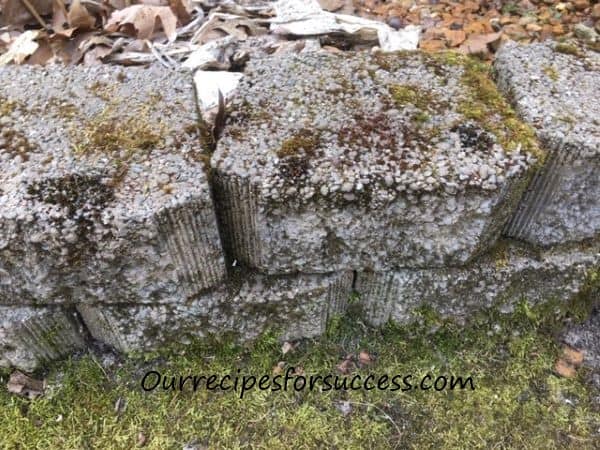
This is a very common question folks ask themselves. Is it worth spending the money on a pressure washer? After all, if you need a pressure washer you can just rent one. That certainly is an option, but the cost of renting and just the convenience of not having to run to and from the rental center should be a consideration.
If you start checking around in your area, you can expect to pay anywhere between $50 to $90 a day to rent a pressure washer. If you have several things you want to use it on most rental stores offer a reduced weekly rate, but it’s still close to the $400 range.
As you can see it doesn’t take many cleaning projects before it starts to make sense to own a pressure washer of your own, cost-wise. For me, it’s the convenience of owning your own washer. You can work at your own pace and it’s available for little jobs whenever you have time to tackle them.
I personally feel most homeowners would have a use for a pressure washer. It’s more a question of how big a pressure washer do I need. If you own a smaller home with just some lawn furniture and a short sidewalk, then maybe a smaller pressure washer will work for you. However, if you own a home with a wood deck or a cement patio, along with some paver walkways and some landscaping features, then the answer is definitely “yes”.
Pressure washers are great at cleaning even the most stubborn molds, mildews, and moss from all of the above surfaces. The force of the water from a pressure washer can dislodge and blast away all kinds of dirt and debris, and leave surfaces clean and shiny or help get them ready for sealing or refinishing.
However, with the correct nozzle, that same pressure washer can be used to clean more delicate items like lawn furniture or even outdoor rugs. So before you rush out and buy just any old pressure washer, let’s take a look at the features of the two main types of pressure washers available, and the tasks each of them are suited for. This should help you with selecting the right pressure washer.
We will have a few links to pressure washers in this article. They are intended to help with pricing and to show certain features for comparison. Full disclosure, we are participants in affiliate marketing. If you click on one of those links and purchases something, we could receive a small commission at no extra cost to you. We only link to sites we use and trust.
What Kind Of Pressure Washer Do I Need?
There are two main types of pressure washers available to homeowners. There are electric and gas-powered pressure washers. They both have high-pressure water pumps, with one being powered by an electric motor and the other being powered by a gas engine. They each have unique features that make them ideal for different jobs.
So let’s take a look at each of their features and go over the pros and cons of each. Then we’ll look at some of the jobs pressure washers can be used and which type of pressure washer might be better suited for the task.
Electric Pressure Washer Features
Probably one of the biggest advantages the electric pressure washer has is it’s easier to use. Connect a garden hose to it and plug it into an electric outlet and you’re ready to get started. Just turn the switch on and it’s ready. There’s no messing with gas or oil and there’s no pull starting to deal with.
As a general rule, most electric pressure washers operate at a little lower pressure and uses a little less water compared to the gas engine powered washers. The lower water usage is actually a limiting factor we’ll look at closer a little further down in the article. They range from 1800psi to 2000psi and pump about 1.5 gallons of water per minute. Obviously, there are exceptions, which I’ll mention below.
The electric pressure washers are typically a little smaller and lighter, which makes them easier to move around and they don’t take up as much storage space either. For most smaller jobs requiring less power, the electric pressure washer can be a good choice.
Gas Powered Pressure Washer Features
Gas-powered pressure washers typically operate at higher pressures and use a little more water. They can range anywhere from 2700psi to 3000psi and spray roughly 2.5 gallons of water. The higher pressures and increased water volume give them their cleaning power.
Depending on the size of the engine, a pressure washer will normally run for about an hour on a tank of gas. And as with any gas engine, there is a little more maintenance with the gas models compared to the electric models.
When we started looking at pressure washers the first thing my wife wanted to know was how hard are the gas models to start compared to using an electric model pressure model. For the most part, modern gas engines have come a long way in this respect. If maintained properly, most start with just one or two pulls and without much effort. We’ll look at some of the maintenance steps you can take a little later in the article to keep your gas-powered washer running smoothly.
The real story is when you start comparing the power and the price of both types of pressure washers. So in order to make a better decision on what type you’ll want to buy let’s start by looking at the power element.
Water Pressure vs Volume
All too often when folks are looking to buy a pressure washer they focus on the “pressure rating” of the washers. However, there is a second rating that is as important, which is how much water volume the pump produces at the high operating pressure. This is expressed in “gallons per minute” (GPM).
There’s a common formula used by most companies and industry experts to express the cleaning power (CP) of a pressure washer. You multiply the maximum pressure rating (PSI) by the rated water gallons per minute (GPM) The formula looks like this, CP = PSI x GPM. The cleaning power formula is most useful when used to compare the potential cleaning power between pressure washers.
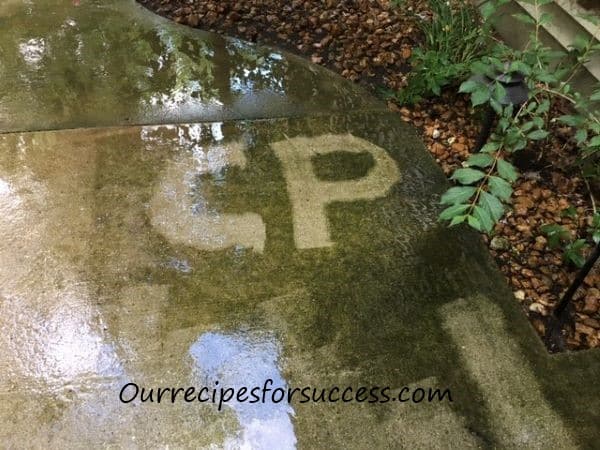
There is an article on the Goodway Commercial power washer website called “Flow Rate Is The Key When Choosing A Pressure Washer”. Tougher jobs often do require more pressure, but in their article, they state that “pressure will only get you so far, and that water flow rate plays a greater role in determining how well a pressure washer performs”.
The pressure is the driving force behind the water and water volume does play a significant role. It’s for this reason that pressure washer nozzles are sized specifically for each pressure washer make and model based on the pump pressure and the water GPM flow rate the pump put out. It’s true some tougher jobs do require the higher pressures and volumes, but smaller pressure washers are still able to tackle some pretty tough jobs, thanks to the nozzle sizing.
The picture below is the chart for the pressure versus water volume for each nozzle for my Craftsman pressure washer. This will help show the relationship between pressure and volume.
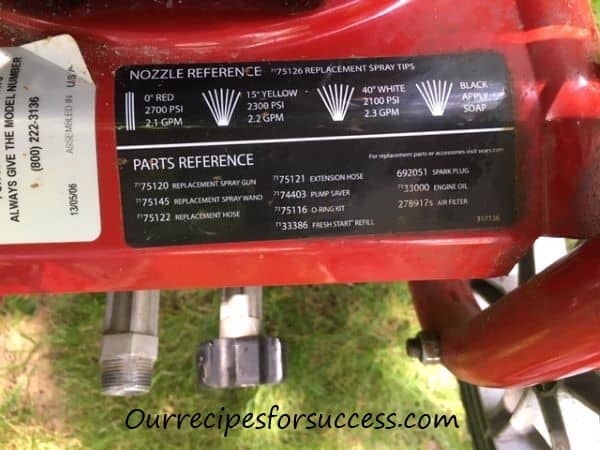
The best example I can come up with to help demonstrate this is with your typical garden hose. Let’s see if this helps.
Garden Hose Pressure vs Volume Example
The typical home water system operates at roughly 50 to 55psi (pressure per square inch). A 100-foot garden hose without a nozzle, with a fully open supply valve, can fill a 5-gallon bucket in about 1 minute. That’s twice as much water as the typical pressure washer uses. But because the end of the garden hose is wide open (no hand nozzle) the pressure in the hose is not at the full 55psi. It will be much lower than that. That’s why the water just flows out without much force.
The same is true for a pressure washer. Remove the nozzle and with the unit running squeeze the wand handle. The water flows out in a small stream without any force to speak of. The pump will only discharge roughly what it rated for like this. For my pressure washer that’s only about 2.5 gallons per minute.
Now screw an adjustable hand nozzle onto the end of the garden hose and set it to the “jet” position and see what happens. Now the water comes out at a much greater force. That’s because the hand nozzle has created a restriction by making the water flow through a much smaller opening. The other thing that has happened is because of the restriction and lesser flow the actual pressure in the garden hose is actually much closer to the 55psi.
The same thing happens to the pressure washer when a nozzle is installed. The restriction of the nozzle allows the water pressure from the pump to come up closer to the rated pressure (2700psi in my washer) and delivers the rated water volume for the particular nozzle being used with amazing force. If you reduce either the pressure or the water volume, the cleaning power will be reduced, as the formula shows above.
I know this is a very basic comparison, but I feel it does help demonstrate the relationship between pressure and water volume.
Pressure Washer Uses For Homeowners
The type of pressure washer for home uses needed really depends on what you plan on using it for. Do you need it for washing your car or UTV? Or maybe you need to clean your boat or camper. I have a friend that has a smaller electric pressure washer that he uses mainly for cleaning the bugs off his Harley-Davidson after riding it. He likes the convenience of it.
Don’t take me wrong, electric pressure washers can be used on larger jobs. It’s just going to take you a little longer and, depending on the task, they may not be quite as effective as some of the larger pressure washers.
If you’re a homeowner like the one mentioned above with the wood deck, cement patio, paver walkways, or landscaping features, then you may want to consider owning a larger gas-powered pressure washer. With the correct nozzle and their additional power, they are more effective on tougher grime and can clean a larger area much quicker.
With that said, there are electric pressure washers that operate at similar pressures compared to the gas-powered washers. Just be sure to check the water GPM rating on these washers. I did find at least one electric pressure washer with cleaning power similar to gas-powered units and that’s the Homdox 3500 PSI Electric Pressure Washer. I’ve never used this washer, but all its ratings put it right in the mix with the gas-powered washers of its size. It has very good reviews and a price to match for a pressure washer of its size.
Let’s take a look at a list of some of the typical pressure washer uses and what size of washer you may want to consider owning. Keep in mind that with the correct nozzle even larger pressure washers can be used for more delicate jobs too. We’ll cover nozzle selection a little more below. The big takeaway here is to go with the right type of pressure washer for the toughest, largest job you have.
| Recommended Pressure washer | 1800psi | 2500psi | 3000psi |
| Wash cars, motorcycles | X | X | |
| Outdoor rugs, patio furniture, | X | X | |
| Taxidermy (cleaning European mount skulls | X | X | |
| Propane tanks, barbecue grills | X | X | |
| Boats | X | X | |
| Home siding, fences | X | X | |
| Landscaping blocks, walkway pavers, birdbaths | X | ||
| Cement patios, decks | X | ||
| Removing the sand from between pavers | X |
Video: Cleaning Outdoor Rug With A Pressure Washer
Pressure Washer Safety
Pressure washers for home use are a great tool. But like all the ads and articles say they operate at very high pressures. That means pressure washers have the potential to be dangerous if used improperly. So anytime you are going to use your pressure washer you should be taking the necessary steps to protect yourself. Let’s look at a couple of ways you can do this.
Follow Manufacturer’s Recommendations
The first recommendation is to always read your owner’s manual. I know… who reads the manual? The answer is I should and you should. They tell you how to safely use and care for your new pressure washer to get the most out of it.
They tell you things like you should only use hoses, nozzles, and fitting made for your pressure washer. Using components not designed for your specific pressure washer can lead to injuries or can damage the washer itself. Stick with the correct equipment and replace damaged hoses and fitting right away.
The manufacturer will also warn you to never point the pressure washers nozzle at people or pets. Even the least aggressive nozzle should never be used to rinse someone off or to wash any animal. The water from a pressure washer’s nozzle can be very dangerous. Especially at close distances.
The jetting water from a pressure washer can easily cut or tear human flesh. Sure that sounds painful, but that’s not the worst of it. It can also inject water into the body that can cause all sorts of pain and other health issues. Seemingly minor injuries caused by pressure washers, if not properly treated, can lead to serious injections and even amputations.
Always Wear Personal Protective Equipment (PPE)
As we all know pressure washers have incredible cleaning power. So remember, whatever they strip away is going somewhere and it goes there very quickly! That’s why you should always wear the proper personal protective equipment, commonly referred to as PPE. Number one on the list is always wearing safety glasses when operating a pressure washer. At times it may even be wise to wear a face shield too. No matter what the job is there will always be some dirt and debris flying.
Some other types of protective gear you should consider wearing is hearing protection, long pants, and sturdy rubber boots. Never use a pressure washer while barefoot or wearing sandals. You may want to even wear a rain suit in cold weather or confined areas.
For more information on protecting yourself when working at home read our article on wearing personal protective equipment. We cover many ways for you to safely complete home projects.
How To Use A Pressure Washer
Operating a pressure washer isn’t all that difficult. There are a few things you should do before starting the washer that can help protect it and keeping it running reliably for many years. And then there are some things you’ll want to do to help ensure finishing your cleaning job safely and efficiently. Here are a few tips I use that might just help you.
Before Starting Your Pressure Washer
If you own a gas-powered pressure washer, you should always check the engine oil level before using it. Running an engine with low oil is a recipe for disaster. It’s always a good idea to top up the gas tank while the engine is cool too. And if you have to refill it later, make sure to let the engine cool for 10 or 15 minutes first. Spilling gas on a hot engine can cause a fire.
Before connecting the water to any pressure washer I like to start by connecting the high-pressure hose to the pressure washer first. Each end of this hose will have rubber “o-ring” to form a good seal on the high-pressure water generated. Make sure the hose fittings and o-rings are clean, in good shape (no cut or gouges), and lubricate them with a little white lithium grease occasionally.
Then connect the garden hose to the pressure washer and turn on the outdoor water faucet. What we are trying to do here is to get all the air out of the garden hose and the pressure washer pump and hose. Let the water run for a good 2 or 3 minutes. If you have a very long garden hose, let it run longer. Pockets of air hitting the pump can put a lot of undue stress on the internal parts and can damage or shorten the life of the pump.
Once the air is purged, finish assembling and attaching the wand. By squeezing the wand handle you can attach it with the water running and it helps purge any air out of the wand. If you choose to turn the water off to attach the wand, elevate the wand end of the high-pressure hose first. This will help keep water in the high-pressure hose. After the wand is attached turn the water back on and squeeze the wand handle to purge any trapped air. The below video shows you how to get started purging the air out of the hoses.
Now you can insert the nozzle. As discussed above, you’ll need to select a nozzle that’s right for the job. Each nozzle has a different spray pattern. The wider spray patterns are less aggressive and less likely to damage the surface you’re cleaning. If you have concerns, I recommend starting with the widest nozzle and hold it back at least two feet from the surface when you start cleaning. Keeping your wand and nozzle moving, slowly move the nozzle closer to the surface until you get the results you’re looking for. If more cleaning power is needed, install the next nozzle and repeat the process.
Video: Purging Air Out Of You Pressure Washer
Starting And Using A Pressure Washer
At this point, you’re ready to start the pressure washer so you can get to work. Electric pressure washers a pretty much ready to start cleaning, however, the gas-powered washers should be to run for at least one minute to warm up before putting them to work. I recommend this with any gas engine you own. It helps get the internal parts lubricated, up to temperature, which will help extend the life of the engine too.
Never let any pressure washer run for more than 3 to 5 minutes without using the wand! With no water flowing from the wand the pump comes up to pressure quickly and then it has to “unload”. This basically means the water from the pump is routed back to the inlet side of the pump (garden hose side) and gets recirculated back through the pump. With no fresh, cool water entering the pump this causes the recirculated water to heat up. If left long enough, it can get hot enough to damage the pump.
Another useful tip is anytime you shut your pressure washer off there will be high-pressure water trapped in the hose. Before trying to restart your pressure washer you should squeeze the wand handle to relieve the pressure. This will make restarting easier and it’s better for the overall health of the washer.
Now you’re ready to start cleaning. I still recommend reading your owner’s manual before starting, but these steps should help you get started. Once you start pressure washing you’ll see how powerful the water spray is. If your nozzle is too aggressive or there are soft spots in the surface being cleaned, that spray can easily cause damage. By keeping the nozzle tip moving and adjust how close the nozzle is to the surface you can regulate that force.
You also need to be careful of nearby items. The high-pressure spray from most of the spray nozzles is capable of shredding plants or blast away the dirt and damage the roots. Never spray toward living or fragile items. The dirt and debris being stripped and thrown can cause injury or damage.
This is especially true when using the more aggressive nozzles, like the 15° or 0° nozzles. There are some folks that recommend never using the 0° nozzle because it is so powerful. It can cause unexpected damage very quickly. The takeaway here is to be careful when making your nozzles selection. Use only what is needed to get the job done.
Pressure Washer Maintenance And Storage
To keep your pressure washer operating like new you will need to give it a little tender loving care. They are no different than your vehicle, motorcycle, lawnmower, or any other tool. Regular preventive maintenance, care, and proper storage will keep them operating smoothly for years. Below are the main care items I follow for a gas-powered washer and have had good results over the years.
Pressure Washer Maintenance
Electric pressure washers don’t require the same level of maintenance as gas-powered washers. Other than proper operation and storage, there is very little maintenance needed, compared to gas-powered pressure washers.
The keep gas-powered washers running smoothly for years follow these easy to do maintenance tips. These tips are not intended to replace the manufacturer’s maintenance recommendations. They are to demonstrate the minimum care you should expect to perform.
Preparing A Gas Powered Pressure Washer Engine For Long Term Storage
If you own a gas-powered pressure washer, there are a couple of tips I recommend that will help ensure your engine starts and runs better in the spring.
Preparing Your Pressure Washer Pump For Long Term Storage
The two steps above were specific to gas engines on pressure washers. However, both gas and electric pressure washer need a little extra care before putting them away for the winter. A good cleaning is always a good start, but there’s more you can do to keep your pressure running strong for years. Below are the steps to prepare your pressure washer for long term storage, so it’s ready to go when you need it.
As a rule, anytime you’re not going to be using your pressure washer for a month or two, giving it a little shot of the pump saver isn’t a bad idea either. It’s also a good idea to give the pump a little shot in the spring before you start it too. Using a pump conditioner helps save expensive repairs or replacing the pump.
Conclusion
Hopefully, this pressure washer guide article has helped answer your question. There is a lot to consider when looking for a pressure washer. What can I use a pressure wash for? Should I get an electric or gas-powered pressure washer? How big a pressure washer do I need? Is it cheaper to rent a pressure washer? These are all great questions and I hope you found the answers to those questions and more.
Pressure washers for home use are a great cleaning tool for homeowners. In my experience owning your own pressure washer is convenient and it will save you time and money. So use this information and some of the provided links to compare pressure washer features and pricing. Then don’t be afraid to purchase the model that fits your needs. I don’t think you’ll regret the decision to own your own pressure washer.
If you have any comments or questions, you can leave them in the comments section below or you can email us at [email protected]. FYI, we do not collect or share email addresses. We will only use them to reply to your comments or provide answers to your questions. We are also required to let you know that some of our links are “affiliate links”. This means if you click on a link and make a purchase, we could make a small commission, at no extra cost to you. This helps offset the cost of maintaining our website. So, if you like what you’ve seen, please be sure to give us a “Like” and “Share” on Facebook and Instagram too. Thank you for reading and good luck with all your home projects!

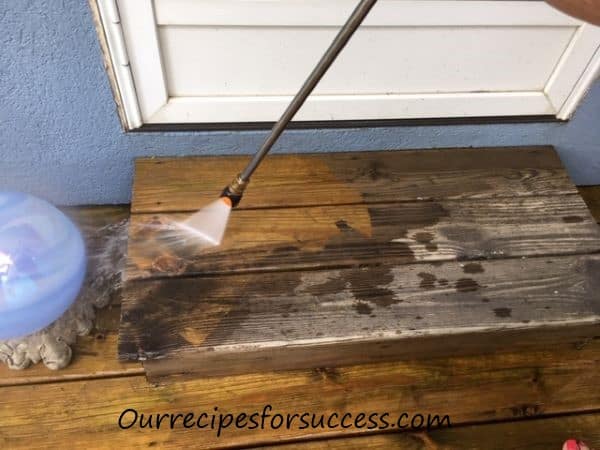
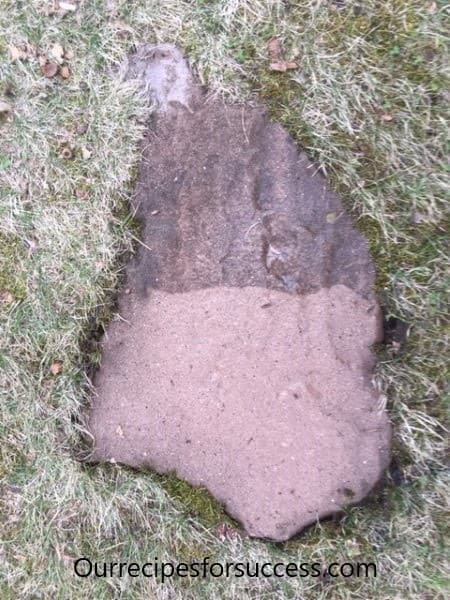
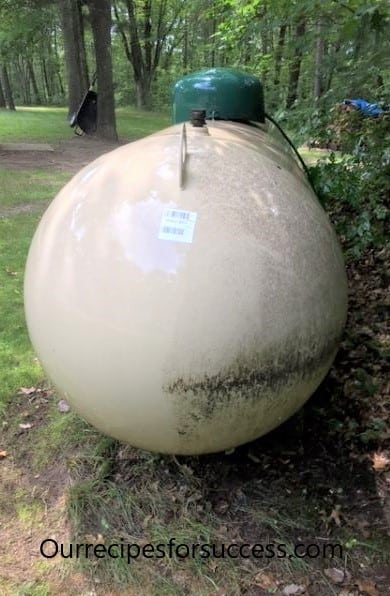
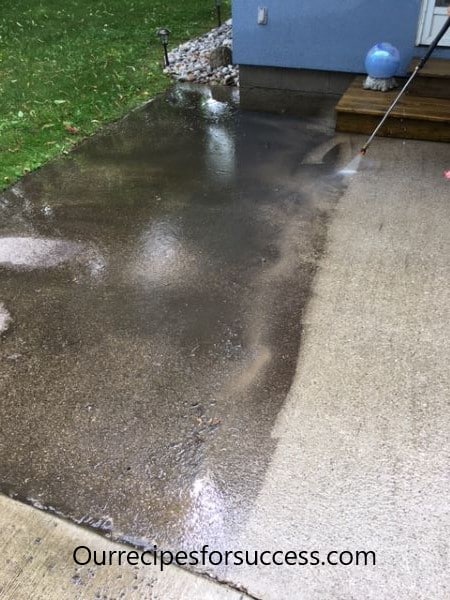
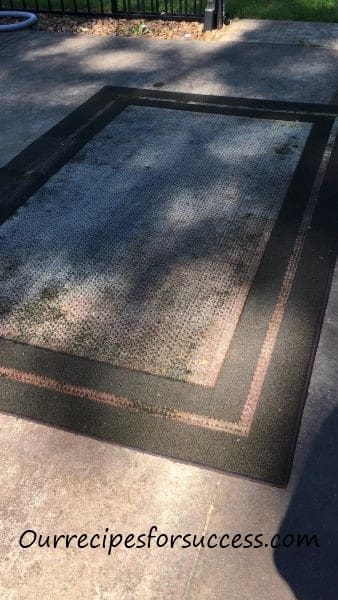
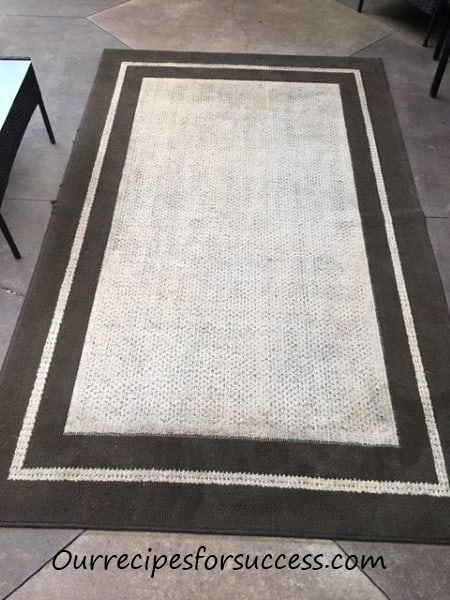
Thanks for sharing! I’ll have to give a rotary nozzle a try.
Great article!
I have had all types and sizes over my lifetime and the best overall for me has been the electric ones as gas is just too much trouble to move and store.
Hardly ever ( well never) use any other nozzle than a rotary 👍
No gouging and streaks, especially on softer woods. Go rotary and you will be hooked!!
Hope this helps Craig Lamond